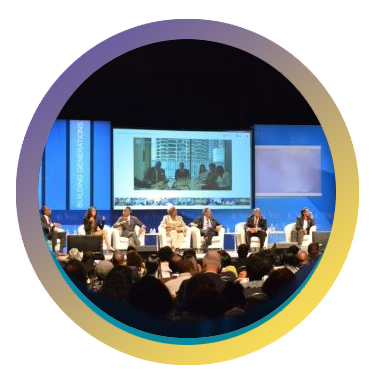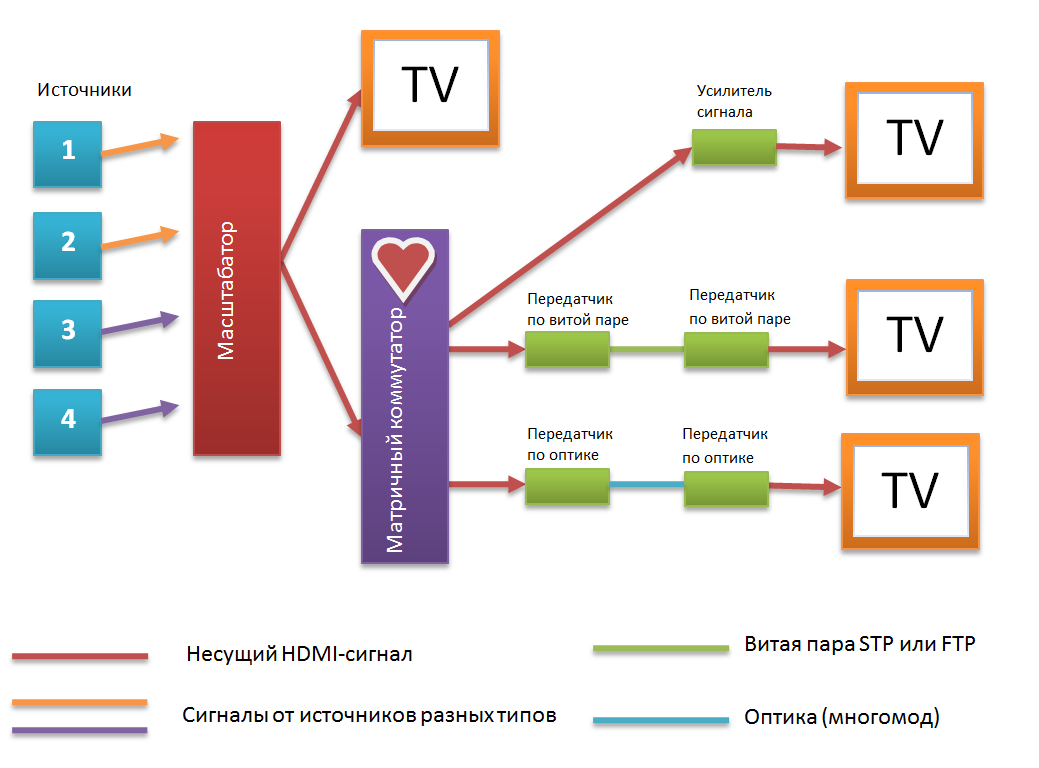Basic principles of building conference rooms
 Developing a model of a conference room for our client recently on a test site, the working group faced many questions from colleagues: “Why is this thing needed?”, “Why so much equipment?”, Etc. Then we decided to write a short article- An educational program on the basics of conference room equipment. We hope, and here it is useful to someone.
Developing a model of a conference room for our client recently on a test site, the working group faced many questions from colleagues: “Why is this thing needed?”, “Why so much equipment?”, Etc. Then we decided to write a short article- An educational program on the basics of conference room equipment. We hope, and here it is useful to someone.Surely every habriel was in modern conference halls, filled with projection equipment, video walls, audio equipment, congress systems, video conferencing systems and many others, depending on the coolness. But even if it was not possible for someone to go in person, then surely everyone has seen something like that in a movie. Or, for example, monitors with advertisements that hang over cash registers in supermarkets. In general, it is clear to everyone that this is a damn handy thing that allows you to demonstrate various multimedia materials to a large number of people.
This article will discuss the basic principles of building conference rooms.
So, the system of a typical conference room includes the following main components:
')

- Sources of audio and video signals - can be located both in the conference room itself (laptops, document cameras), and in the server room located at a sufficiently long distance from the conference room (CD / DVD players, satellite receivers, video servers).
- Information display equipment - various plasma and LCD TVs, projectors, monitors in the presidium, etc.
- Sound equipment - various acoustic systems (ceiling, wall, floor).
- Amplification and switching of signals - the core of the conference room system, a matrix switch providing broadcasting of audio and video signals from several sources simultaneously to several output devices.
The equipment of a good conference room must meet a number of requirements.
- Work with any sources of audio and video signals .
Everything is clear here - some conference rooms live a very active life without having clear time limits for holding events, and the speaker can come with any type of signal source: digital, analog, with or without HDCP protection. So, you need to be ready for anything.
- Conversion of any types of signals into a single format .
Here we will stop in more detail. At the moment there are two types of signals - analog (VGA) and digital (DVI-I, HDMI). It is clear that digital halls are more popular, which, however, does not prevent some customers from equipping conference rooms with systems based on a
Format converters allow you to convert, for example, component video and VGA to HDMI (for example, Kramer VP-434). In addition to signal converters, devices called scaling devices can serve this purpose. They have several inputs of different types (CV, YC, VGA, DVI / HDMI) and outputs of a certain type (for example, DVI / HDMI). An example of a scaler is the Kramer VP-747 flagship model - it can do anything.
So, if it is not known what type of video source the speakers will come with, it is worthwhile to include a small scaler in the conference room layout.
- Output signals to the required number of display sources.
- Switching and amplification of audio-video signals
It should be noted that with increasing transmission distance the signal level drops, which significantly affects the image quality. In such cases, so-called equalizers or signal amplifiers come to the rescue. For example, the Kramer signal amplifier is PT-2H, which, according to the manufacturer, is able to raise the signal level literally “from the floor”. It allows you to use HDMI cables up to 45 meters long without loss of signal quality. Sometimes this solution is more economically feasible than, for example, transmitting a signal over a twisted pair, which requires the purchase of special equipment.
Switching refers to the transmission of audio and video signals from multiple sources simultaneously to several output devices. As mentioned above, a matrix switch is responsible for switching signals in the system. And it will be required if there is an extensive and extensive system of audio and video information sources and display devices, event scenarios change quickly and, as a result, a clear interface for controlling signal switching is required.
Like signals, matrix switches are digital and analog. In addition, they differ in dimension. For example, the Kramer VS-88H switch is used to switch HDMI signals and has 8 inputs and outputs.
In addition, there are so-called modular matrices in which the types and number of inputs and outputs can be changed by adding the appropriate cards.

- Control switching signals - various push-button control panels, usually embedded in the wall .
So, to create a conference room we need:
1) bring multi-format signals from sources to one type (carrier signal);
2) to transmit the carrier signal over long (or not) distances;
3) to switch signals with display devices with the highest possible quality.
Speaking of signaling over long distances. For this technology is used to transmit digital signals DVI, HDMI, DisplayPort and VGA over twisted pair. At Kramer, this technology is called DGKat. Switching to twisted pair is economically justified at distances from 50 m, for smaller distances it is more expedient to use signal amplifiers (see above).
For example, to transmit an HDMI signal over long distances without loss of quality, you can use PT-571 (transmitting side) and PT-572 (receiving side) - transmitters of an HDMI signal over twisted pair. With their help, you can transmit the HDMI signal with a resolution of 1080p over a distance of 70-80 meters! It is necessary to pay special attention to the fact that these devices work only with shielded twisted-pair cables (FTP or STP) with shielded connectors.
If you want to transmit a signal over very long distances (for example, at sports facilities), you will have to use instruments to transmit signals over an optical multimode cable. For example, 670T / 670R, which allows you to transmit an HDMI signal over a distance of up to 1,700 meters.
Below is a general diagram of possible options for switching equipment of the conference room:

In brief, here are all the fundamental issues that arise when equipping conference rooms. What brand of transmission equipment, amplification and switching signals to choose - a matter of personal preference. If you have any questions, we will be happy to answer them.
Have a nice day!
Tatyana Bykova,
engineer VKS companies DEPO Computers
Source: https://habr.com/ru/post/156073/
All Articles